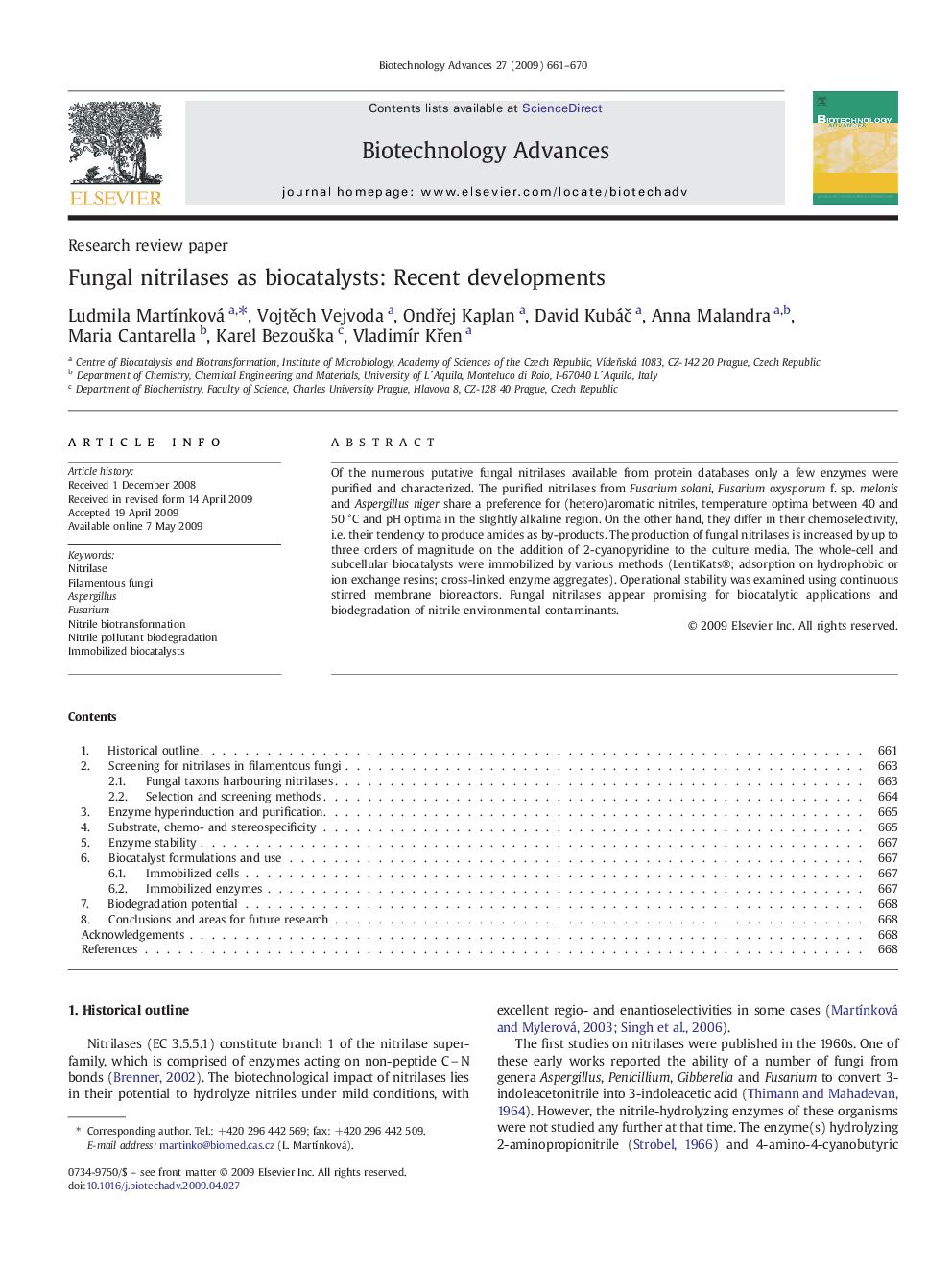| Article ID | Journal | Published Year | Pages | File Type |
|---|---|---|---|---|
| 14642 | Biotechnology Advances | 2009 | 10 Pages |
Of the numerous putative fungal nitrilases available from protein databases only a few enzymes were purified and characterized. The purified nitrilases from Fusarium solani, Fusarium oxysporum f. sp. melonis and Aspergillus niger share a preference for (hetero)aromatic nitriles, temperature optima between 40 and 50 °C and pH optima in the slightly alkaline region. On the other hand, they differ in their chemoselectivity, i.e. their tendency to produce amides as by-products. The production of fungal nitrilases is increased by up to three orders of magnitude on the addition of 2-cyanopyridine to the culture media. The whole-cell and subcellular biocatalysts were immobilized by various methods (LentiKats®; adsorption on hydrophobic or ion exchange resins; cross-linked enzyme aggregates). Operational stability was examined using continuous stirred membrane bioreactors. Fungal nitrilases appear promising for biocatalytic applications and biodegradation of nitrile environmental contaminants.
